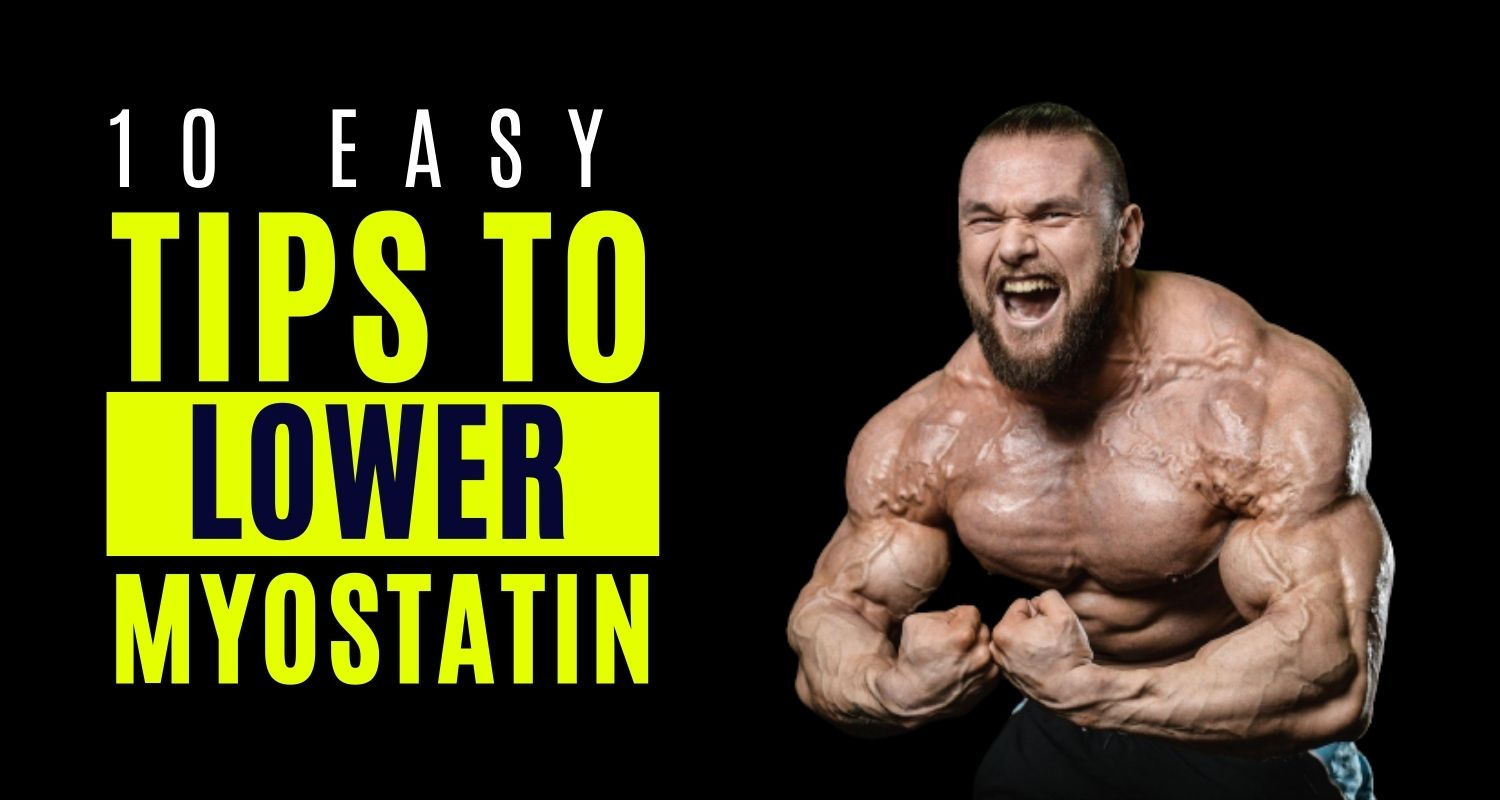Myostatin, often referred to as the “muscle growth inhibitor,” is a protein that plays a crucial role in regulating muscle development and growth.
Higher levels of myostatin can hinder muscle growth, making it a common focus for those looking to build lean muscle mass and improve their physical performance. That’s why it’s essential to have lower myostatin levels.
Lowering myostatin levels naturally can be a key strategy in achieving your fitness goals. In this blog post, we’ll explore 10 effective ways to lower myostatin levels and promote muscle growth.
1. Regular Exercise
Regular exercise, particularly resistance training, is one of the most effective ways to lower myostatin levels.
Resistance exercises like weightlifting, bodyweight exercises, and resistance bands stimulate muscle growth and, in turn, reduce myostatin production. Aim for at least three to four days of weekly strength training to maximize the benefits. [1]
2. Compound Movements Can Help Lower Myostatin
Incorporating compound movements into your workout routine can help lower myostatin levels effectively.
Compound exercises like squats, deadlifts, bench presses, and pull-ups engage multiple muscle groups simultaneously, promoting muscle development and reducing myostatin production.
3. High-Intensity Interval Training (HIIT)
High-Intensity Interval Training (HIIT) is a fantastic way to lower myostatin levels while improving cardiovascular health. HIIT involves short bursts of intense exercise followed by brief rest periods.
This type of training has been shown to increase muscle mass and reduce myostatin levels, making it a valuable addition to your fitness routine.
4. Get Enough Sleep
Adequate sleep is essential for overall health and muscle recovery. Poor sleep can lead to increased stress levels, which can, in turn, elevate myostatin levels.[2]
Aim for 7-9 hours of quality sleep each night to help regulate myostatin and support muscle growth.
5. Balanced Diet
Your diet plays a significant role in managing myostatin levels. To lower myostatin naturally, focus on a well-balanced diet rich in lean proteins, healthy fats, and complex carbohydrates.
Include protein sources like lean meats, fish, eggs, and plant-based options like tofu and legumes to give your body the necessary building blocks for muscle growth.
6. Omega-3 Fatty Acids Can Help Lower Myostatin
Omega-3 fatty acids, found in fish oil supplements and fatty fish like salmon, have been shown to lower myostatin levels. These healthy fats reduce inflammation and support muscle recovery, helping you maintain an optimal environment for muscle growth. [3]
7. Creatine Supplementation
Creatine is a well-known supplement in the fitness world, known for its muscle-building benefits. Research suggests that creatine supplementation may also help lower myostatin levels, allowing for more significant muscle gains. [4]
Consult with a healthcare professional before adding creatine to your regimen.
8. Vitamin D Can Help Lower Myostatin
Vitamin D is essential for bone health and plays a role in muscle function and growth. Low vitamin D levels have been associated with elevated myostatin levels.
To ensure optimal vitamin D levels, consider getting regular exposure to sunlight, consuming vitamin D-rich foods like fatty fish, and taking supplements if necessary.
9. Avoid Overtraining
While exercise is crucial for lowering myostatin levels, overtraining can have the opposite effect. Overtraining can lead to excessive stress on your body, resulting in elevated myostatin levels and hindered muscle growth.
Ensure you incorporate rest days into your workout routine and listen to your body to avoid overtraining.
10. Stress Management
Chronic stress can increase myostatin levels, as stress hormones like cortisol can interfere with muscle development.
Stress management techniques such as meditation, yoga, and deep breathing exercises can help lower stress levels and, consequently, myostatin levels.
Conclusion
Lowering myostatin levels naturally is achievable with the right lifestyle choices and strategies. Incorporating regular exercise, compound movements, and high-intensity interval training into your fitness routine can stimulate muscle growth while reducing myostatin production.
Additionally, getting enough sleep, maintaining a balanced diet, and supplementing with omega-3 fatty acids, creatine, and vitamin D can further support your efforts to lower myostatin levels.
Remember that consistency is critical to achieving long-term results. Avoid overtraining, manage stress effectively, and prioritize recovery to create the optimal environment for muscle growth.
By implementing these 10 strategies, you can lower myostatin levels and work towards building the lean, muscular physique you desire.
References
- Santos, H.O.; Cerqueira, H.S.; Tinsley, G.M. The Effects of Dietary Supplements, Nutraceutical Agents, and Physical Exercise on Myostatin Levels: Hope or Hype? Metabolites 2022, 12, 1146. https://doi.org/10.3390/metabo12111146
- Yang, Chun, and Ai-Lin Luo. “Myokines: A promising therapeutic target for hepatic encephalopathy.” Journal of Hepatology 66.5 (2017): 1099-1100.
- Lalia, Antigoni Z., et al. “Influence of omega-3 fatty acids on skeletal muscle protein metabolism and mitochondrial bioenergetics in older adults.” Aging (Albany NY) 9.4 (2017): 1096.
- Saremi, A., et al. “Effects of oral creatine and resistance training on serum myostatin and GASP-1.” Molecular and cellular endocrinology 317.1-2 (2010): 25-30.
- Micielska, Katarzyna, et al. “Nordic walking rather than high intensity interval training reduced myostatin concentration more effectively in elderly subjects and the range of this drop was modified by metabolites of vitamin D.” Nutrients 13.12 (2021): 4393.

